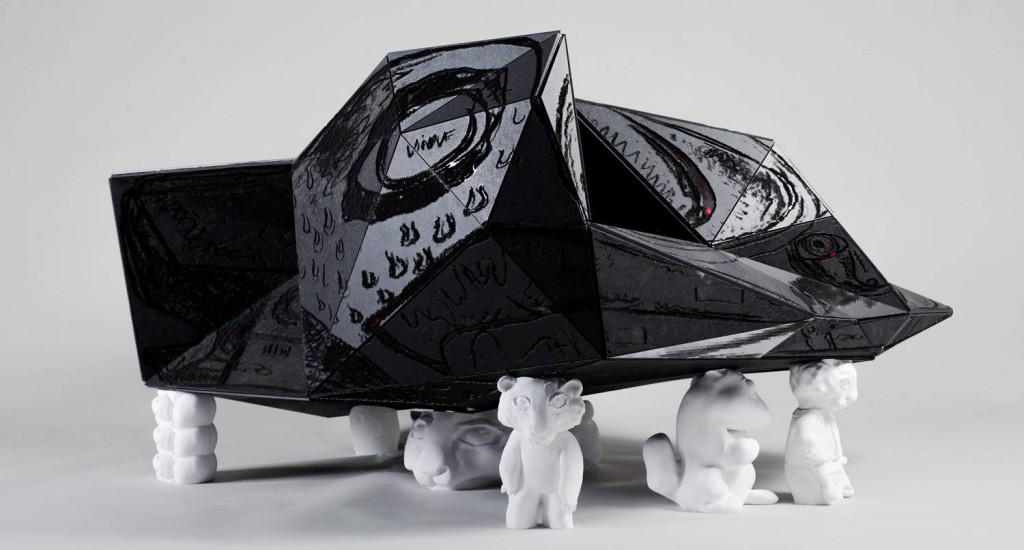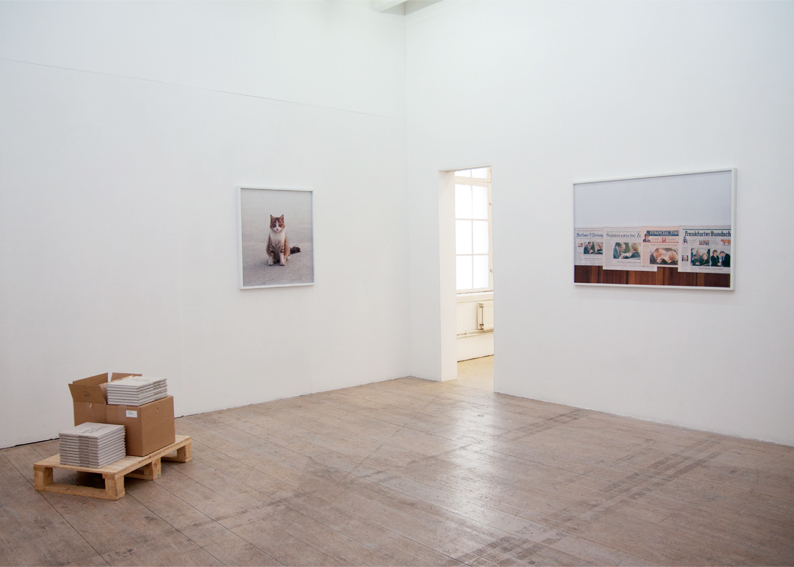Bjarne Melgaard, From the Exhibition, A House to Die In, 2012
A House to Die In, 25 September – 18 November, 2012
Institute of Contemporary Arts, London
A House to Die In is New York based Norwegian artist Bjarne Melgaard’s first solo exhibition in the UK. The Lower and Upper Galleries feature two of his collaborative projects, which investigate the dynamics of creative and collaborative relationships.
The architectural facade in the Lower Gallery realises a key stage in Melgaard’s ongoing collaboration with award-winning architectural firm Snøhetta, who have exchanged architectural drawings, models and documents with the artist since 2011 as they work closely towards the construction of a purpose-built house where Melgaard will live and work. In the exhibition, Melgaard and Snøhetta present a 1:1 facade of the building’s exterior, alongside a wider body of shared research that demonstrates the positive struggle experienced by both parties as they continually challenge the conventions of their respective practices.
The Upper Galleries house an installation of paintings and sculptures that imagine the interior spaces of Melgaard’s proposed residence, alongside bespoke furniture and ephemera from the artist’s studio. Melgaard created the paintings and sculptures in partnership with a group of artists who have no formal art education and little or no connection to the art world (several of whom are in recovery, face mental or emotional challenges, or suffer from schizophrenia). In these works, their layered conversations are made visible as the artists respond to and expand upon his visual lexicon.












